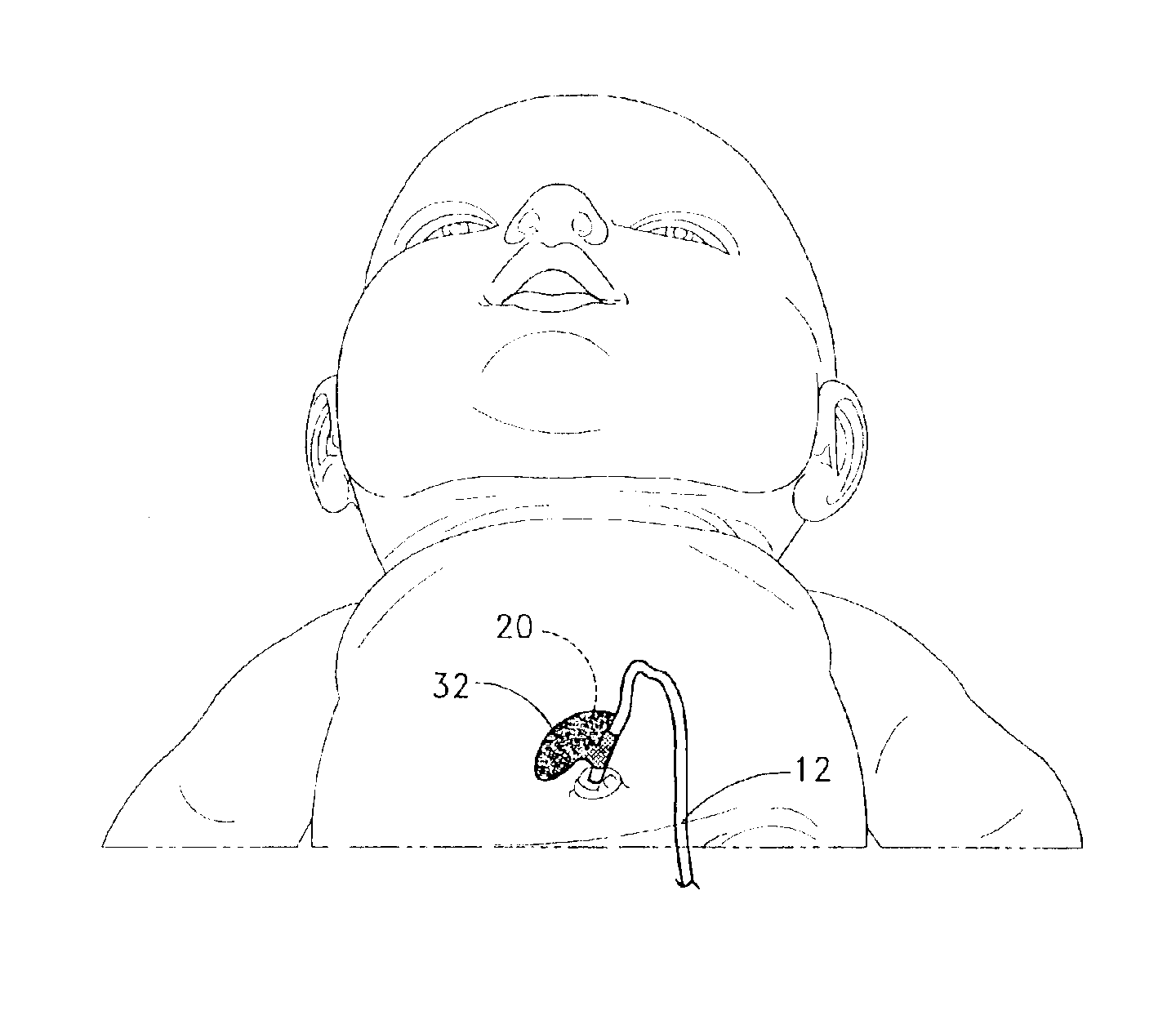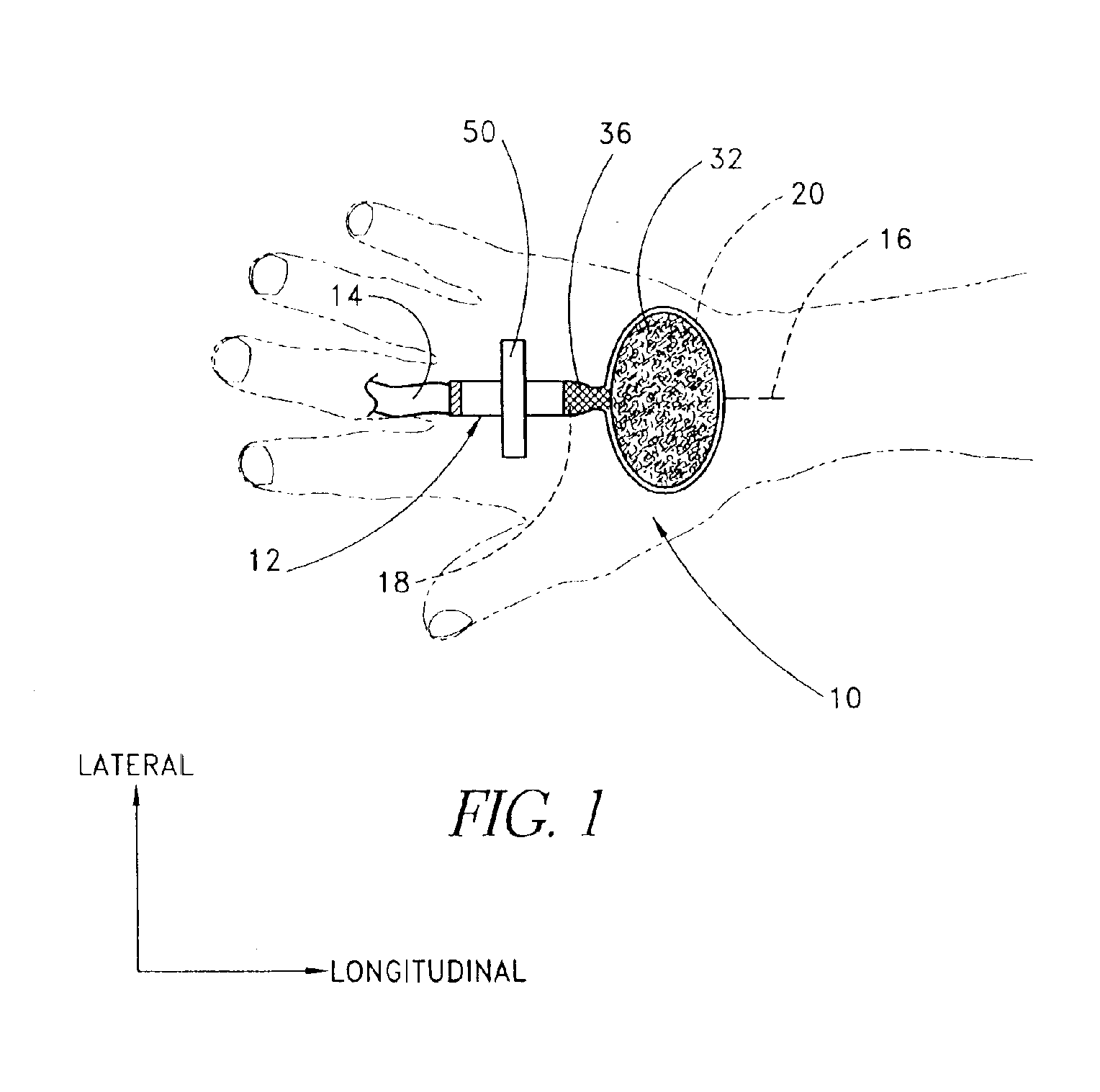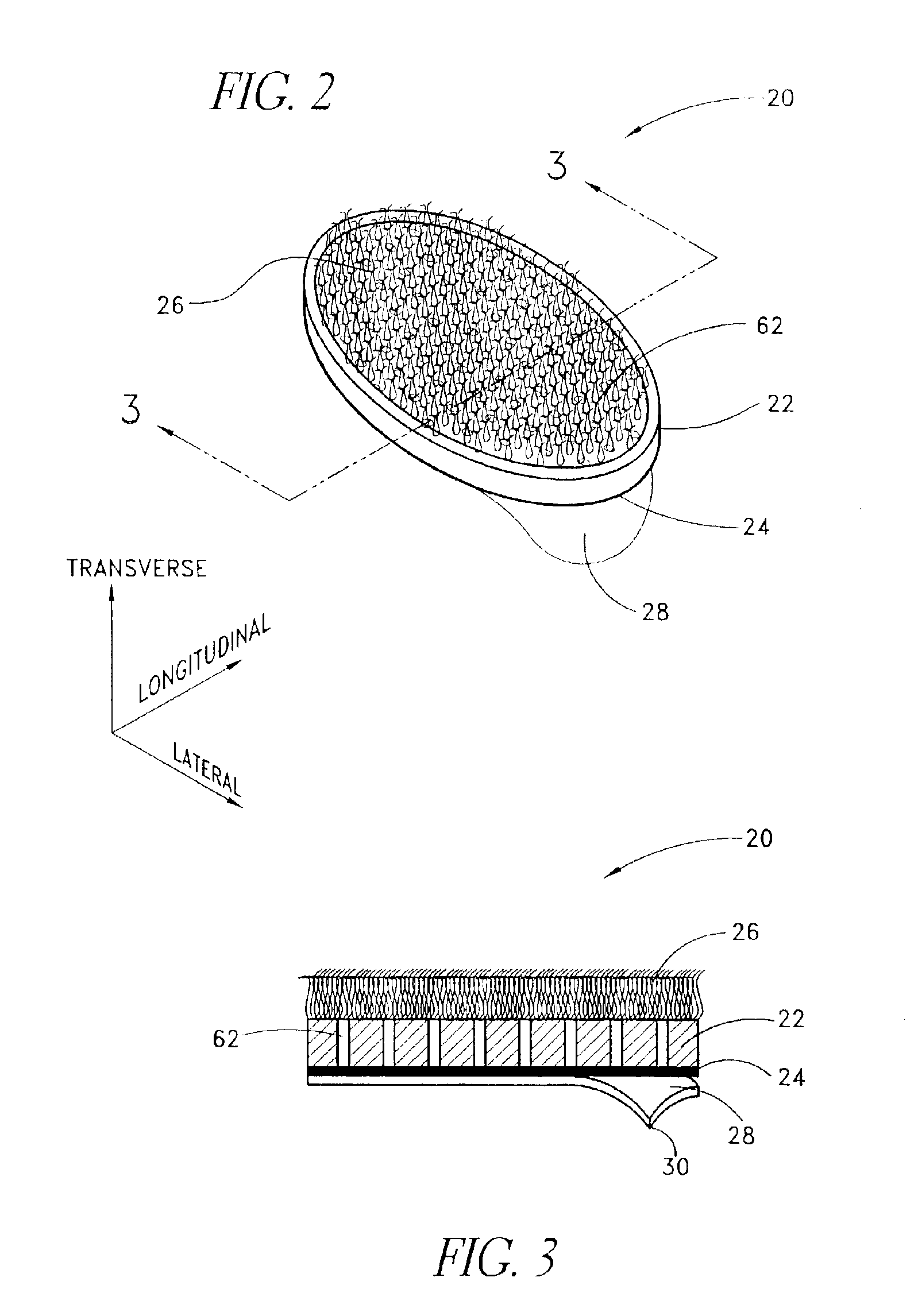Medical line securement device for use with neonates
- Summary
- Abstract
- Description
- Claims
- Application Information
AI Technical Summary
Benefits of technology
Problems solved by technology
Method used
Image
Examples
Embodiment Construction
The illustrated embodiment of the medical line securement device 10 is disclosed in the context of use with an exemplary medical infusion line 12. The infusion line 12 comprises an intravenous (IV) supply tube 14 coupled to a hub 18 of an indwelling IV catheter 16. The principles of the present invention, however, are not limited to IV catheters and lines. Instead, it will be understood by one of skill in the art, in view of the present disclosure, that the securement device disclosed herein can also be used with other types of medical lines, such as with other catheters, fluid drainage and delivery tubes, electrical leads and the like. It is also understood that the skilled artisan can readily adapt the securement device for use in other applications to retain many different types of medical lines to a patient. Thus, the illustration and description of the medical line securement device in connection with an IV line (e.g., the supply line 14 and the IV catheter 16) is merely exempl...
PUM
 Login to View More
Login to View More Abstract
Description
Claims
Application Information
 Login to View More
Login to View More - R&D
- Intellectual Property
- Life Sciences
- Materials
- Tech Scout
- Unparalleled Data Quality
- Higher Quality Content
- 60% Fewer Hallucinations
Browse by: Latest US Patents, China's latest patents, Technical Efficacy Thesaurus, Application Domain, Technology Topic, Popular Technical Reports.
© 2025 PatSnap. All rights reserved.Legal|Privacy policy|Modern Slavery Act Transparency Statement|Sitemap|About US| Contact US: help@patsnap.com



